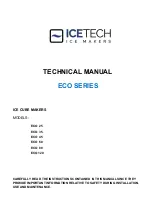
ENGLISH
Translation of the German original user manual
22
3.2 Technical data
Voltages:
EU: 230 V
UK: 230 V
New Zealand: 230 V
Australia: 230 V
US: 120 V
Japan: 100 V
Frequency
:
EU: 50 Hz
UK: 50 Hz
New Zealand: 50 Hz
Australia: 50 Hz
US: 60 Hz
Japan: 50/ 60 Hz
Power:
1,000 W
Water tank:
approx. 2.8 litres
Measurements:
w x d x h / 250 mm x 445 mm x 395 mm
Measurements with portafilter
:
w x d x h / 250 mm x 555 mm x 395 mm
Weight:
18.5 kg
4. MACHINE INSTALLATION
4.1 Preparation for installation
•
Place the machine on an even, water-resistant and stable surface. You can regulate the
height by adjusting the feet of the machine.
•
Never place the machine on hot surfaces.
•
Make sure that the
machine is on a water-resistant surface
in case of water
spillage or leakage.
4.2 Electrical connection
•
Make sure that the local main voltage supply corresponds to the information given on
the type plate on the front panel of the espresso machine.
•
Make sure that you use the correct power plug for your country.
•
Plug the machine into a grounded socket only and do not leave it unattended.
•
Do not roll or bend the power cord.
•
Do not use an extension cord / do not use a multiple socket.
5. FIRST USE
Read the instruction manual carefully before operating the machine.
Prior to starting the machine, check if:
•
the steam/ hot water valve is closed.
•
the machine is switched off. (Power switch in lower position.)
•
the power cord is disconnected.
•
the drip tray is inserted accurately.
•
the machine is placed on a water resistant surface.
Now you can begin to operate your machine:
1.
Remove the cup heater tray.
2.
Take out the water tank, rinse it and place it back.
3.
Fill the water tank with fresh water, deficient in lime. Replace the cup heater tray.
4.
Insert the plug into the wall socket. Turn the power switch to the upper position. The machine is now on.
5.
The green control lamp and the PID display will come on and a pump noise will be heard. The boiler will
now filled with water.















































